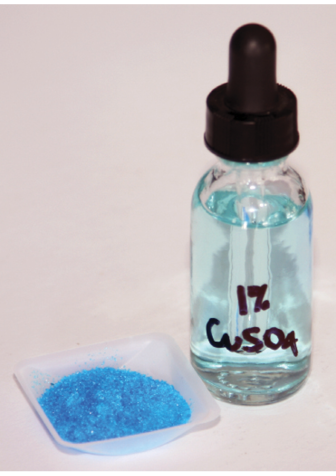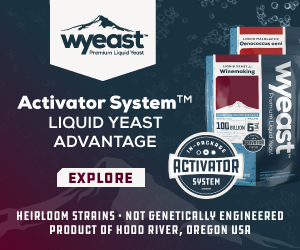
If you have ever encountered volatile sulfur compounds in wine, of which hydrogen sulfide is the most common, you know how repulsive the smell can be. It can shoot one’s anxiety up a few notches because it always seems to catch you by surprise, and that the source of the problem is often difficult to pinpoint. What’s worse is that the fix will likely require a copper treatment—a chemical addition that you wish you could have avoided — although there are alternate solutions.
Volatile sulfur compounds, or VSCs, originate from many sources including elemental sulfur; sulfates or sulfites; sulfur-containing amino acids by microbes; sulfur-containing pesticides; fermentation dynamics and yeast stress; and what is called reductive winemaking where wine is exposed to extremely low levels of oxygen. While VSCs or “reductive aromas” can have faulty characteristics, reductive aromas can also exhibit positive attributes when present in tiny quantities.
Hydrogen sulfide (H2S), the focus of this article, is the most recurrent of the problem VSCs in winemaking; it is detected as the unmistakable smell of rotten eggs and at a very low threshold of around 1 μg/L (that’s one microgram per liter). Along with methanethiol, it is also responsible for the reductive character in bottled wine described as having a struck flint or rubber smell.
Sources of H2S
There are several sources of H2S and factors affecting H2S production during winemaking. These include:
• The presence and concentration of naturally occurring or yeast-derived sulfur-containing amino acids in the juice — this is the single-most important source of H2S. During enzymatic reduction, yeast cells generate sulfur to synthesize sulfur-containing amino acids; however, if these can’t form because of insufficient quantities of sulfur, the sulfur can be made into sulfides.
• S. cerevisiae metabolic reduction of inorganic sulfate from elemental sulfur from either overuse of sulfur-based vineyard sprays (or their use too close to harvest) or from wicks accidentally dropped to the bottom of barrels during sulfuring.
• Differences in S. cerevisiae gene expression amongst strains enabling certain isolates to produce more H2S and sulfur dioxide (SO2) than others. The Montrachet strain is notorious for producing H2S.
• Reduction of sulfite and sulfate from exogenous additions of SO2 and copper sulfate (CuSO4), respectively.
• Enzymatic degradation of sulfur-containing compounds from autolysis when wine is left too long on dead yeast cells, especially on the gross lees.
• From the re-release of chemically “entrapped” sulfides during aging. This factor can be particularly problematic as it may resurface well after an initial problem with H2S had been resolved.
• Undue yeast cell stress from, for example, yeast assimilable nitrogen (YAN) and/or vitamin deficiency, and high levels of turbidity, soluble solids and total acidity. And as red winemaking involves maceration of juice/wine with grape solids, H2S is a more common occurrence in red wines.
• Fermentation kinetics, with temperature being a critical parameter.
In bottled wines described as having a reductive character or smelling of struck flint or rubber, H2S is due to reductive conditions. It is speculated that the H2S is formed from the reduction of sulfate or sulfite catalyzed by iron or copper. It can also be formed from the release of phenols or ascorbic acid from the sulfur compounds they sequestered. H2S may also be released from oxidation products (e.g., aldehydes, ketones, quinones) from fermentation that initially bound to the H2S. Quinones, the compounds responsible for the browning effect in oxidized wines, quickly bind with H2S in wine during fermentation and remove reduced aromas.
Dealing with H2S
If there is an excessive amount of H2S or if it is left untreated, H2S can react with ethanol to form ethanethiol, which imparts a smell of raw onions, rubber or natural gas, or worse yet, of a skunk. Ethanethiol can then become esterified to the sulfurous-smelling ethyl thioacetate or dimerized via an oxidative reaction into diethyl disulfide, which imparts odors reminiscent of onions. These compounds are easier to smell and detect and can be almost impossible to remove. Therefore, detecting an H2S problem early and acting promptly are critical to fixing the problem.
Very mild cases of H2S can be treated with a simple aeration although this could prove problematic if the wine is not treated promptly. As H2S oxidizes, it forms elemental sulfur that needs to be removed immediately; otherwise, the reverse reaction can occur and cause sulfur to reduce and revert back to H2S. Additionally, other reducing agents present in wine will compete for any oxygen added and reduce the effectiveness of the treatment.
Cases of H2S can be treated with copper sulfate (CuSO4); the reaction causes copper sulfide (CuS) to precipitate.
As copper can react with other VSCs with a thiol function (that is, those compounds with a sulfur–hydrogen group in their molecular structure), the CuSO4 treatment should be weighed against the likelihood of reducing desirable volatile thiol aromas in, for example, Sauvignon Blanc, Chenin Blanc, and Colombard. Copper is non-selective on thiols — in addition to reacting with other volatile thiols, it can react with non-VSCs, such as the naturally occurring antioxidant glutathione (GSH), and the wine could become more prone to spoilage.
Since the amount of H2S cannot be readily quantified by home winemakers, bench trials (described in the next section) should be conducted with small and incremental amounts of CuSO4 until the smell is neutralized. Overuse of CuSO42 can result in excessive copper ions that could catalyze harmful oxidative reactions, so proceed with extreme care.
If thiols cannot be successfully treated with CuSO4, the wine is best discarded as thiols can react further via oxidation by combining with other thiols and form strong disulfide bonds, resulting in disulfides that cannot be treated with copper as these compounds do not have a thiol function as sulfides do.
Disulfides are generally present in concentrations that we cannot sense; however, if allowed to reduce back to their thiols, which have a lower detection threshold, they can become a source of off-putting smells. Note that bottled wine lives in a reductive environment, and therefore, previously undetected disulfides may become reduced to detectable thiols.
One method to deal with disulfides is to reduce them to their thiols by breaking the disulfide bond with sulfite, and then adding ascorbic acid to prevent re-oxidizing the thiols. A copper treatment can then be used to treat the thiols.
Conducting Bench Trials with CuSO4
Only minuscule amounts of CuSO4 should be required for the treatment of H2S, otherwise the wine is beyond repair. There are also health concerns with excessive copper; legal limits in commercial wines are typically in the order of 0.2–1 mg/L, 0.5 mg/L in the US. Therefore, you will need to measure very carefully — extensive bench trials are a must here.
Working with a dilute 1% CuSO4 solution is best. It is prepared by dissolving 1 g of copper sulfate pentahydrate (CuSO4•[1]5H2O) crystals — the most common form of copper sulfate with its bright blue color — in some distilled water and diluting to 100 mL. Here we will simply refer to the copper sulfate pentahydrate solution as CuSO4 solution.
Label two wine glasses, one as control and one as copper. Pour 50 mL of the affected wine into each glass. With a 1-mL pipette or syringe, transfer one drop of CuSO4 solution. into the copper glass. Swirl each glass, let them sit for about five minutes, then smell each, but do not taste. If the copper glass still has the stinky smell, no safe amounts of CuSO4 can eliminate the H2S smell. The single drop is roughly 1.0 mg/L of copper, and therefore just at the acceptable limit. If the single drop does neutralize the smell, you can continue the trial to determine how much CuSO4 you will need to treat your entire batch. Here, 1 L of wine in a 1,000-mL graduated cylinder wine works best.
Transfer a single drop of CuSO4 solution into the wine in the 1000-mL graduated cylinder. Each drop is now roughly 0.05 mg/L of copper. Stir the wine to thoroughly dissolve the CuSO4. Pour some wine into the copper glass, swirl both the control and copper glasses, let them sit for about five minutes, then smell each.
If the smell of H2S persists, return the sample from the copper glass back to the graduated cylinder (we don’t want to change our 1000-mL reference volume), add another drop of CuSO4 solution, and repeat the process until the H2S smell disappears, without exceeding 20 drops to stay within the safe maximum.
Once the smell is neutralized, scale up the volume used in the 1-mL pipette or syringe for the entire batch. For example, if you needed 0.1 mL to rid of the H2S smell and you need to treat a 5-gallon (19-L) batch, then you would need to add 0.1 x 19 or 1.9 mL of CuSO4 solution.
Once the batch is treated, allow a settling period of up to one week, then rack and coarse filter to remove the CuS precipitate, which resembles a black powder. Complete removal of CuS by racking or filtration may not always be possible.
Alternatives to CuSO4
If you prefer not to work with copper sulfate, as some winemakers do, there are alternatives that you can try in its place.
You can use Bocksin, a German-made product related to the fining agent silicon dioxide (kieselsol). It immediately bonds to H2S and removes the aroma. Because it’s formulated like silicon dioxide, it acts like a fining agent, bonding to proteins in the wine, settling out and leaving sediment. Add Bocksin at a rate of 1 mL/L of wine. Stir in gently but thoroughly and then rack the wine once the sediment has settled at the bottom.
For reds, you can also try adding natural yeast derivative nutrients, such as OptiRED, at a rate of 300 mg/L (that’s 6 g for a 20-L carboy) of wine.
As a last resort only and when other treatments are not effective, you can try using enological activated carbon at a rate of up to 250 mg/L (that’s 5 g for a 20-L carboy), adding it directly to the wine and stirring thoroughly. Add bentonite immediately after the treatment, rack after a few days, and filter the wine before bottling. Here too, bench trials are necessary — excessive carbon will strip color and leave an off carbon-like flavor.
Anecdotally, some winemakers have successfully taken advantage of the lipophilic properties of disulfides as they have a tendency to combine with or dissolve lipids or fats. Additionally, mineral or olive oil have been used to remove disulfides.
Sur-Lies Whites Aging in Barrels
What about H2S and other VSCs in whites that have been aging on the lees in barrels? Researchers Valérie Lavigne-Cruège and Denis Dubourdieu have proposed a very effective method to deal with H2S, methanethiol, and ethanethiol smells in these whites. They have demonstrated that a simple racking and aeration is not sufficient to eliminate the unpleasant odors. The proposed procedure involves a racking with aeration and temporary removal of the lees.
Specifically, the process involves racking the wine with aeration, frequently stirring the fine lees in the barrel over a 48-hour period, and then re-introducing the lees into the wine. Lavigne-Cruège and Dubourdieu demonstrated a marked decrease in H2S, though comparable to a double racking with an aeration treatment, but a complete elimination of methanethiol and ethanethiol. What was also interesting is that the lees stopped producing VSCs once re-introduced into the wine.






